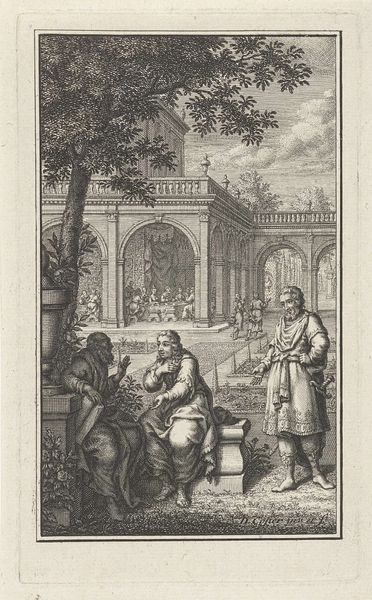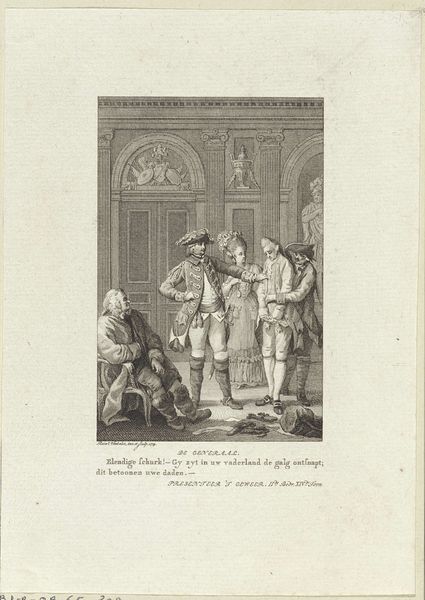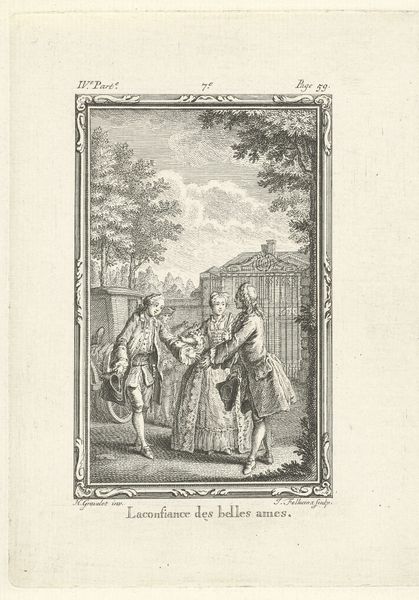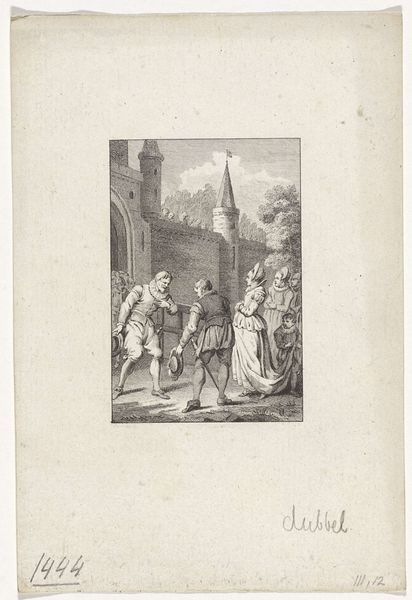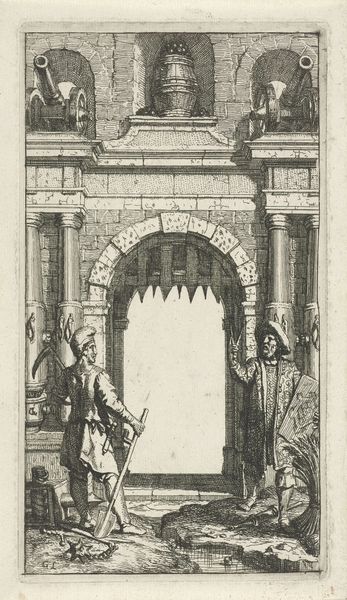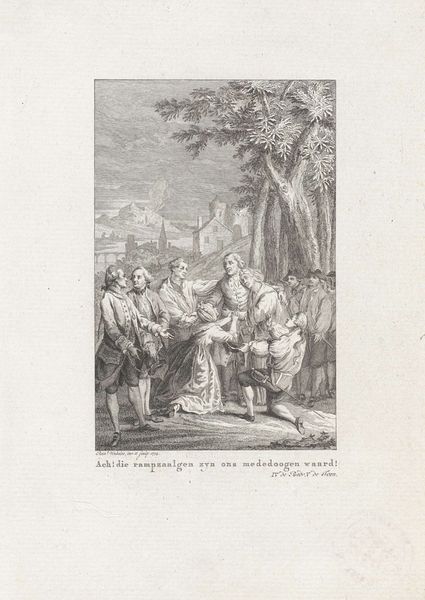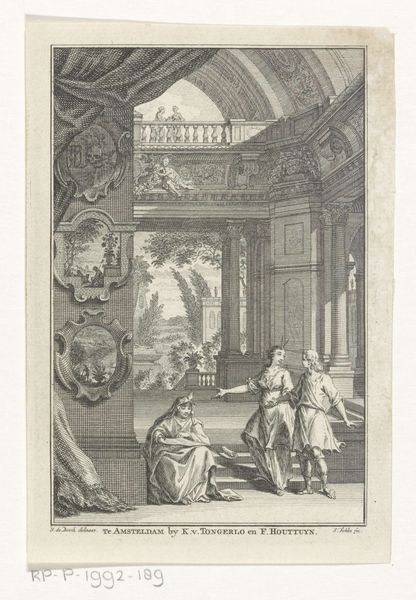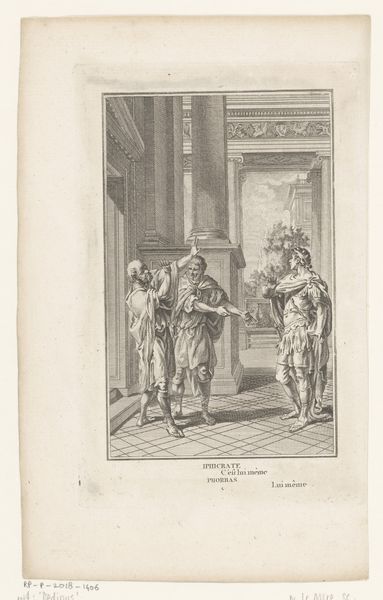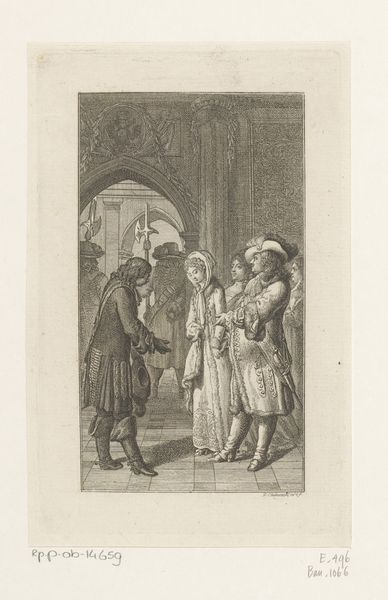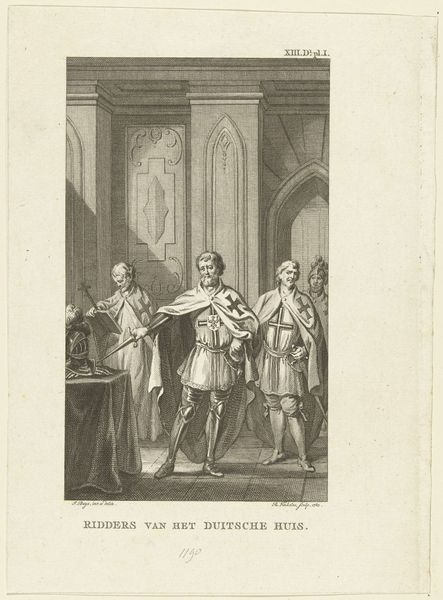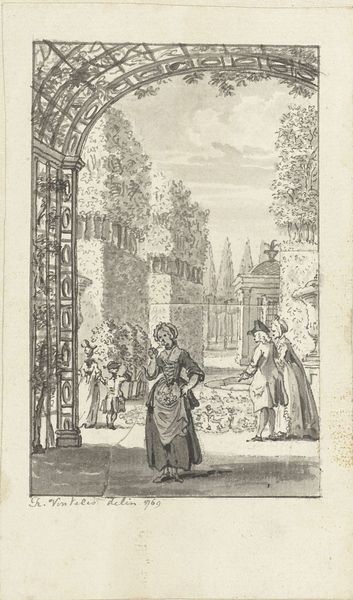
Dimensions: height 216 mm, width 122 mm
Copyright: Rijks Museum: Open Domain
Curator: Well, this etching, entitled "Het nut van de wetenschap," or "The Advantage of Science," by Reinier Vinkeles, dates back to 1773. The print is currently held here at the Rijksmuseum. Editor: My first impression is the contrast – it has a formal architectural setting but with very casual-looking figures strolling through it. It looks as if a genre scene were set in the backdrop of history, and made in such a way to present scientific authority as embedded within those genre scenes, rather than standing above them. Curator: Exactly! The use of engraving allows for incredibly fine detail, particularly evident in the architectural elements, which act as a statement about progress and reason, which had direct appeal to contemporary Dutch intellectual circles during the Enlightenment. This print medium democratized such allegories to new bourgeois audiences, with new social aspirations based in trade and empire. Editor: That’s a fascinating point about democratization. It highlights how printmaking allowed the mass dissemination of ideas. The materials themselves became agents of change. Tell me, how would this circulate? What kinds of labor and knowledge went into creating this print and distributing this fable? Curator: Consider how such works moved – from the artist's studio to the publisher, then to the seller. Etchings like these weren't just aesthetic objects; they were commodities traded and discussed, forming an important segment in Dutch cultural commerce of the 18th century and contributing significantly to a national self-image in that era. The scene itself speaks to such mercantile endeavors, depicting what one can assume are elites on leisurely, perhaps mercantile, ventures, enjoying their leisure through trade, just as the fable can also circulate through these same circuits of profit. Editor: It all speaks volumes about accessibility. How are these concepts represented physically, what types of materials were at the ready, who has them, who could distribute them, etc. If they circulated more widely then we might suggest that these ideals were much more than mere aspirations in a period characterized by aristocratic control of patronage and power. The scale of the print is also important to me; its dimensions are quite modest which reinforces my impression that this was intended to be shared or distributed. Curator: That is a strong argument. And on that note, by looking closely at this engraving we understand the mechanics by which "The Advantage of Science," as it states in the fable, truly translated to a changing society, mediated by artistic output that changed hands and even, possibly, opinions. Editor: A worthwhile reminder of art's tangible effects within cultural movements!
Comments
No comments
Be the first to comment and join the conversation on the ultimate creative platform.
